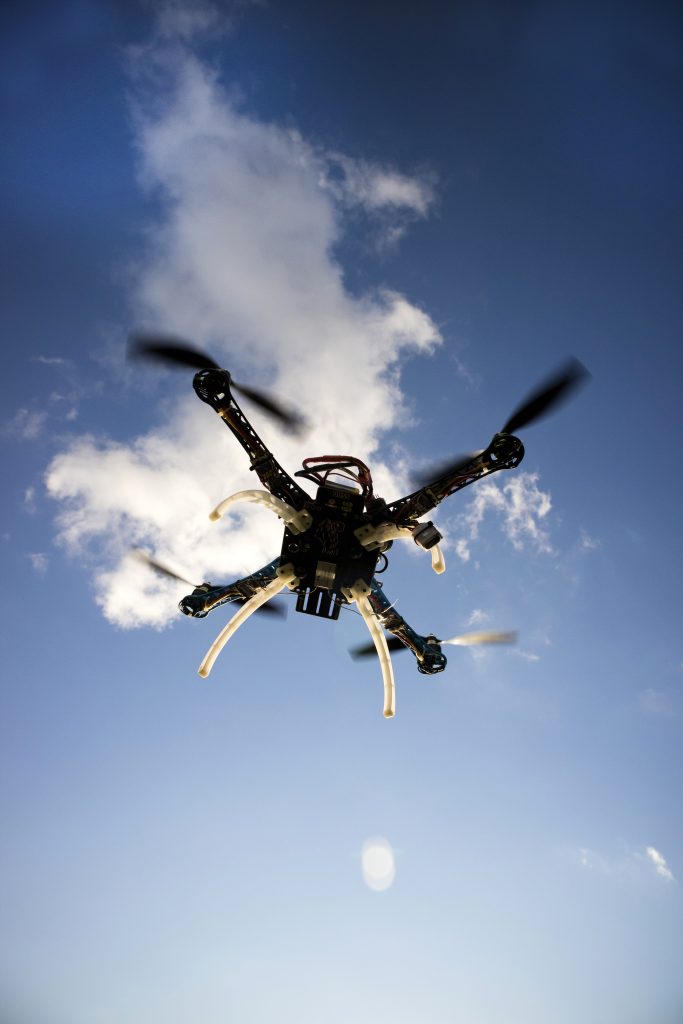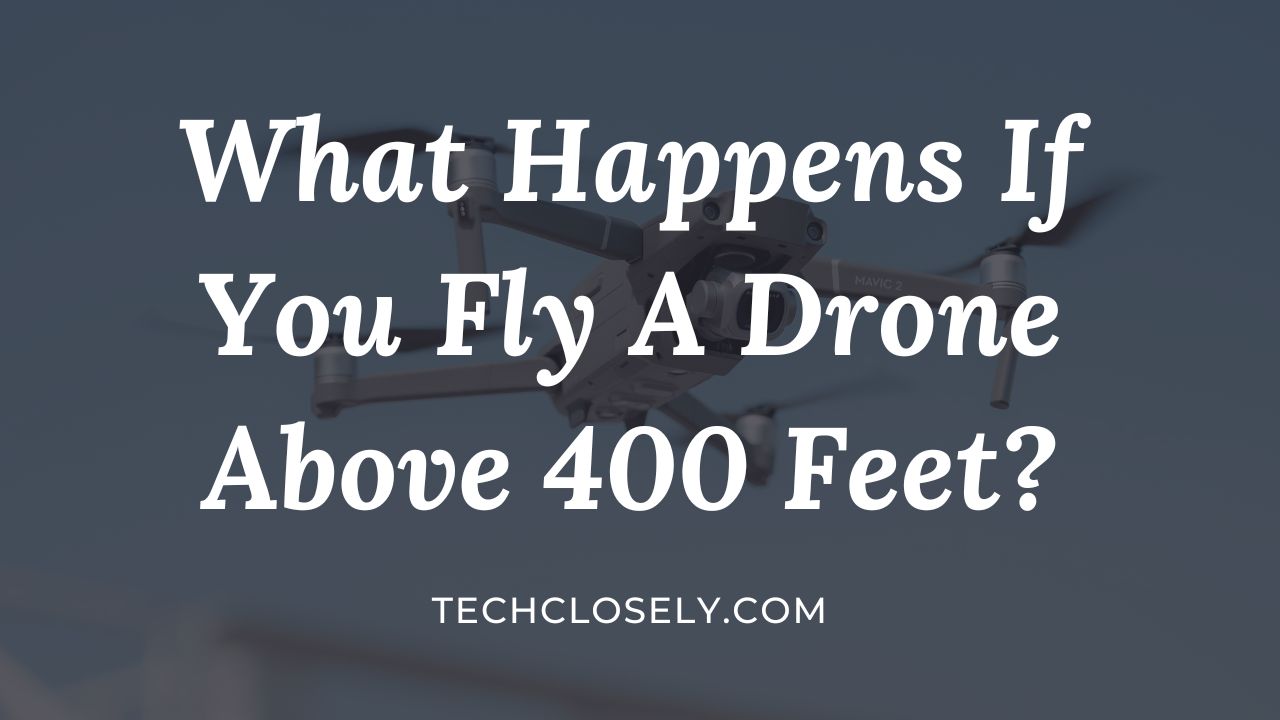Drones have revolutionized the way we see the world from above, providing us with stunning aerial perspectives that were once only accessible to professional photographers or pilots.
However, amidst the excitement of exploring the skies, it’s essential to be aware of the rules and regulations that govern drone flight. One critical restriction that drone operators must adhere to is the 400-foot altitude limit imposed by aviation authorities.
In this blog post, we will delve into the intriguing question: What happens if you fly a drone above 400 feet? We’ll explore the reasons behind this altitude restriction, the potential consequences of violating it, and how to fly legally above 400 feet.
Whether you’re a recreational drone enthusiast or simply curious about the rules that govern drone flight, join us as we uncover the risks and ramifications associated with flying a drone beyond the 400-foot threshold.
Should you fly a drone higher than 400 ft?
The Federal Aviation Administration (FAA) plays a crucial role in regulating drone operations in the United States, prioritizing the safety of both people and airspace.
Under FAA’s Part 107, recreational drone operators are prohibited from flying their drones higher than 400 feet (120 meters) above ground level. This altitude restriction is primarily in place to prevent interference with manned aircraft operating in the airspace.
Furthermore, the FAA faa regulation mandates that drone pilots must comply with all regulations outlined in Part 107. This includes registering drones weighing more than 0.55 pounds, obtaining a drone pilot’s license through a required test for commercial drone flights, and adhering to rules such as flying within visual line of sight and respecting individuals’ privacy.
Additionally, operating drones within a 5-mile radius of an airport is strictly prohibited.
Failure to comply with these regulations can lead to legal consequences and fines for drone operators. It is essential for drone pilots to understand and adhere to FAA regulations to ensure safe and responsible drone operation.
What happens if you Fly a Drone above 400 Feet?

Risk of Losing Your Drone
One of the potential consequences of flying a drone above the 400-foot altitude limit is the increased risk of losing your drone. As drones ascend to higher altitudes, they become more susceptible to strong winds and weather conditions.
Flying above the recommended limit puts your drone at greater risk of being carried away by strong gusts or encountering unpredictable atmospheric conditions.
The higher the drone flies, the more challenging it becomes to maintain control and bring it back safely.
Losing a drone not only results in financial loss but also means losing the valuable equipment and footage it carries.
Fines from the FAA
Violating the 400-foot altitude limit can lead to legal consequences and fines imposed by the Federal Aviation Administration (FAA).
The FAA has established regulations and guidelines to ensure the safety of the airspace and prevent interference with manned aircraft. These regulations are in place to minimize the risk of mid-air collisions and maintain the integrity of the airspace system.
If a drone operator is found to have flown their drone above the altitude limit, they can face penalties and fines from the FAA.
The specific fines and penalties for violating drone regulations can vary depending on the severity of the violation, previous infractions, and the potential harm caused.
The FAA takes drone safety seriously and aims to enforce compliance to protect both manned aircraft and individuals on the ground. The fines can range from a few hundred dollars to several thousand dollars, depending on the circumstances.
It is essential for drone operators to familiarize themselves with the FAA regulations and adhere to the prescribed altitude limits.
Violation of Drone Flight Regulations
When a drone is flown above the 400-foot altitude limit, it directly violates established flying drone regulations. These regulations are in place to ensure the safety and integrity of the airspace.
By disregarding the higher altitude limit, drone operators face the risk of legal consequences and penalties.
The Federal Aviation Administration (FAA) governs drone operations in the United States, and violating their regulations can result in fines, penalties, and potential criminal charges.
Other countries have similar governing bodies and regulations to enforce safe drone operations. It is crucial for drone operators to familiarize themselves with and adhere to the regulations specific to their region to avoid these consequences.
Endangering Airspace Safety
Exceeding the altitude limit disrupts the established separation of airspace between drones and manned aircraft. It can lead to airspace congestion and compromises the overall safety of the airspace system.
Increased Vulnerability to Wind and Weather Conditions

Flying a drone above 400 feet exposes it to increased vulnerability to wind and adverse weather conditions. As the drone ascends to higher altitudes, it becomes more susceptible to stronger winds that can easily carry it off course or even cause it to lose control.
High-altitude winds are often stronger and more unpredictable compared to ground-level conditions, posing a significant risk to the stability and control of the drone. This increased vulnerability to wind can make it challenging to maintain precise positioning, increasing the likelihood of accidents or crashes.
Additionally, adverse weather conditions such as rain, snow, or fog can further impair the drone’s flight capabilities and increase the risk of damage or loss.
Challenges in Maintaining Visual Line of Sight
Another consequence of flying a drone above 400 feet is the difficulty in maintaining a visual line of sight with the aircraft.
Maintaining visual contact with the drone is crucial for safe and responsible operation, as it allows the operator to monitor its position, proximity to other objects, and any potential hazards in the surrounding area.
However, as the drone flies higher, it becomes smaller and more difficult to see clearly, especially if there are obstructions or poor lighting conditions.
Limited visual line of sight impairs the operator’s ability to respond quickly to changes in the environment, increasing the risk of collisions, accidents, or losing control of the drone.
Maintaining visual line of sight is a fundamental principle of safe drone operation and disregarding it can have severe consequences.
Privacy of People
Flying a drone above 400 feet raises concerns regarding the privacy of individuals on the ground. As the altitude increases, the drone’s field of view expands, potentially intruding on people’s privacy or violating their expectations of personal space. It is important to respect privacy rights and not use drones to infringe upon the privacy of others.
In many jurisdictions, there are specific regulations and guidelines in place to address privacy concerns related to this unmanned aircraft or drone operations. Violating these regulations can lead to legal consequences, damage the reputation of the drone operator, and negatively impact public perception of drones as a whole.
Drone operators must be mindful of their surroundings and avoid flying in areas where privacy may be compromised, such as private property or sensitive locations.
How to legally fly a Drone above 400 feet?
Drone pilots must adhere to the FAA Part 107 rules and regulations to fly a drone above 400 feet.
Under Section 107.51 of these regulations, there are specific conditions that allow for flights above the 400-foot altitude limit.

According to Section 107.51, drone operators can fly above 400 feet if they remain within a 400-foot radius of the tallest structure or topography in the area. This means that as long as there are buildings or natural features, such as hills or mountains, that exceed 400 feet above ground level (AGL) within a 400-foot radius of the drone, it is permissible to fly above 400 feet.
This provision allows for drone operations in areas where the surrounding structures or terrain justify flying at higher altitudes.
However, it is important to note that drone pilots must still adhere to other regulations, such as maintaining a visual line of sight with the drone, avoiding flying over people, and respecting airspace restrictions.
FAQs – What Happens If You Fly A Drone Above 400 Feet?
Q: Can I fly my drone above 400 feet in a remote, unpopulated area?
A: The altitude limit applies regardless of the location. Whether in populated or remote areas, drone operators are expected to adhere to the prescribed altitude limit to ensure safety and regulatory compliance.
Q: Can I Fly My Drone above 400 Feet If there is no Other Aircraft Nearby?
A: No, even if there are no other aircraft nearby, you cannot fly any drone above 400 feet unless you meet specific conditions outlined in the regulations. The 400-foot altitude limit is a standardized rule implemented to ensure the safety of the airspace and prevent potential conflicts between drones and manned aircraft.
Conclusion
In conclusion, flying a drone above 400 feet carries significant consequences regarding legality, safety, and privacy.
Violating the established altitude limit can result in legal penalties, including fines and potential criminal charges. Safety risks arise from increased vulnerability to wind and adverse weather conditions, challenges in maintaining a visual line of sight, and potential privacy infringements.
To ensure responsible drone operation, it is crucial to adhere to the regulations set by aviation authorities, prioritize safety, and respect privacy rights. By operating within the prescribed altitude limits, drone operators can mitigate risks, avoid legal consequences, and foster a safe and enjoyable drone flying experience.

